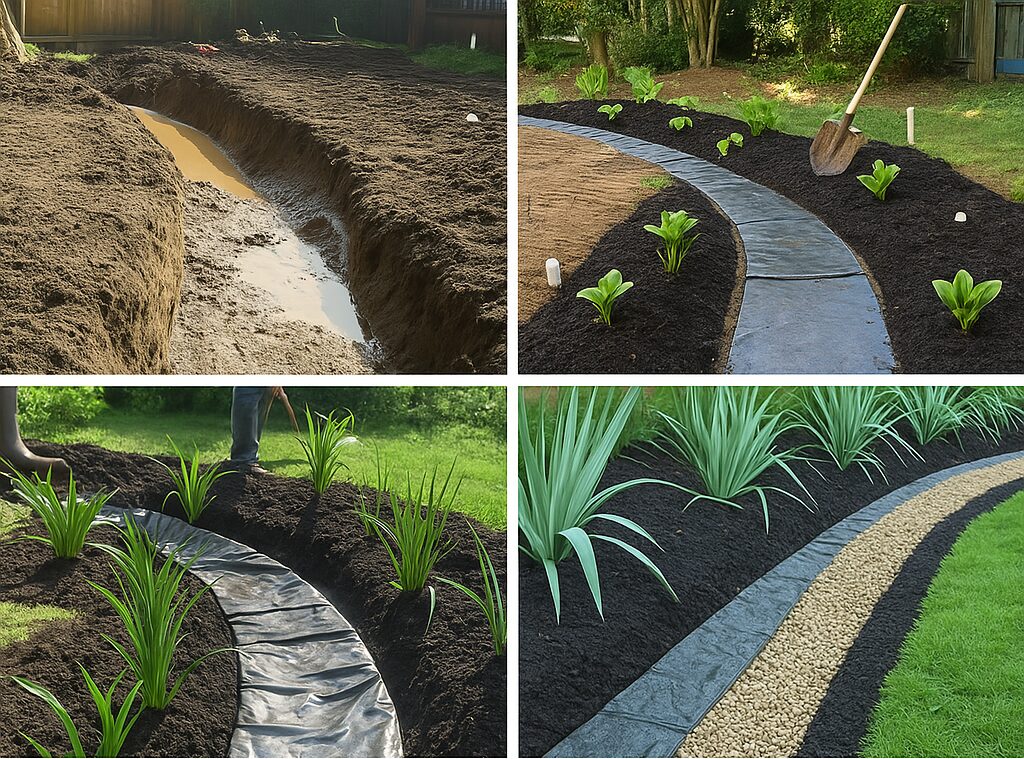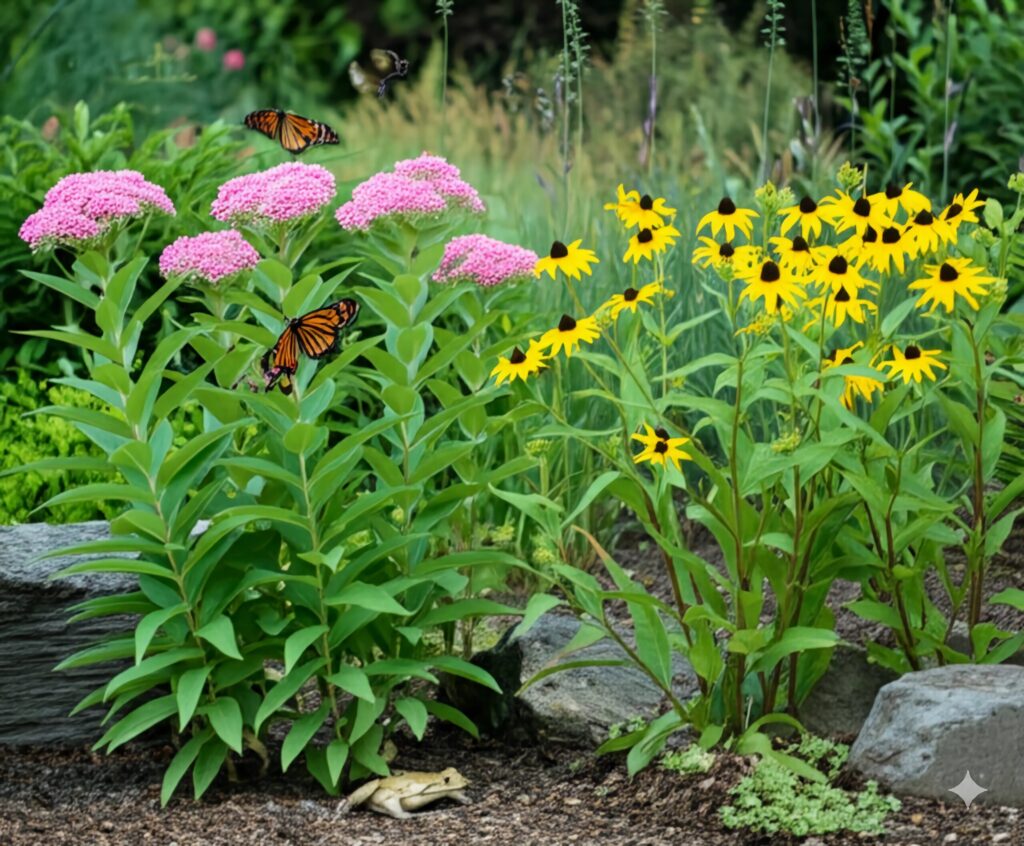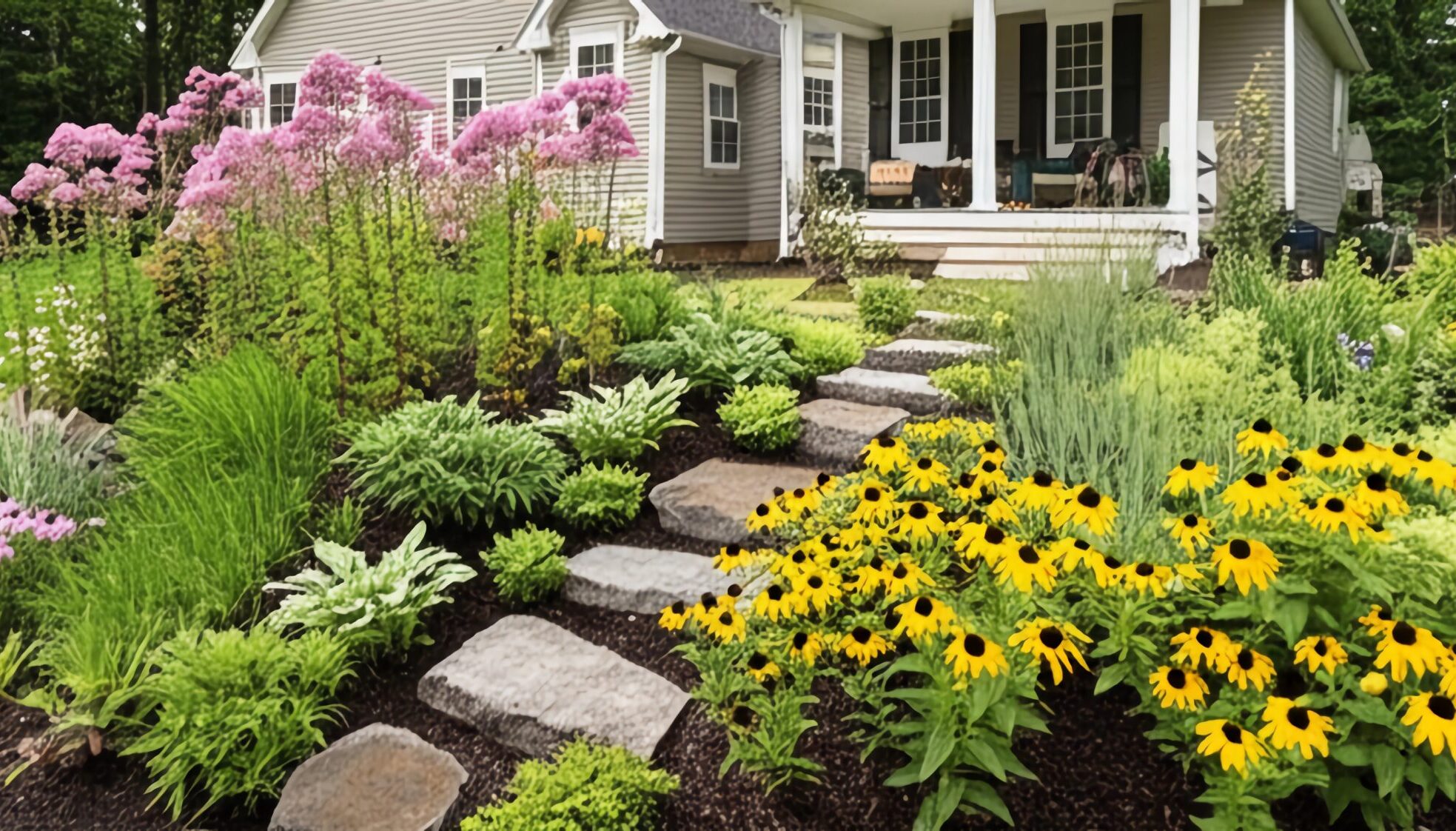Rain gardens are more than just a pretty addition to your yard—they’re a powerful tool for environmental stewardship right in your own backyard. Imagine transforming a soggy, neglected corner of your property into a vibrant oasis that not only beautifies your space but also helps combat stormwater runoff, reduces erosion, and supports local wildlife. That’s the magic of a rain garden.
A few years ago, I found myself staring at a perpetually muddy patch in my backyard after every rainstorm. Frustrated with the constant mess and worried about the runoff polluting nearby streams, I decided to take action. After some research, I stumbled upon the concept of rain gardens. What started as a practical solution to a pesky problem turned into a passion project that not only solved my drainage issues but also became a haven for pollinators and a conversation starter for neighbors. In this guide, I’ll share everything I’ve learned—from the basics to advanced tips—so you can create your own rain garden and make a tangible difference in your community.
What is a Rain Garden?
A rain garden is a shallow, planted depression designed to capture and filter rainwater runoff from roofs, driveways, and other hard surfaces. Unlike traditional gardens, rain gardens are strategically placed to collect water, allowing it to slowly seep into the ground rather than rushing into storm drains. Think of it as nature’s own water treatment plant, right in your backyard.
Rain gardens work by:
- Capturing runoff: Directing water from downspouts or paved areas into the garden.
- Filtering pollutants: Plants and soil naturally remove contaminants like oil, fertilizers, and heavy metals.
- Recharging groundwater: Allowing water to percolate slowly into the earth, replenishing aquifers.
According to the Environmental Protection Agency (EPA), a well-designed rain garden can reduce runoff by up to 30%, making it a simple yet effective way to mitigate urban flooding and protect water quality.
Why Rain Gardens Matter
Rain gardens pack a punch when it comes to environmental benefits:
- Stormwater management: By absorbing excess water, they reduce the risk of flooding and erosion.
- Water quality: Plants and soil filter out pollutants, keeping them out of rivers and lakes.
- Biodiversity: Native plants attract pollinators like bees and butterflies, supporting local ecosystems.
- Aesthetics: They add beauty and curb appeal to your property.
In my own experience, the rain garden not only solved my drainage woes but also became a magnet for wildlife. Within months, I spotted hummingbirds, dragonflies, and even a family of frogs making themselves at home. It was like watching a mini-ecosystem come to life.
Types of Rain Gardens
Rain gardens come in various forms, each suited to different needs and environments:
- Residential rain gardens: Small-scale, perfect for home landscapes.
- Commercial rain gardens: Larger installations for businesses or public spaces.
- Bioretention cells: Engineered for urban areas, often with underdrains for enhanced filtration.
- Climate-specific designs: Tailored for arid or wetland conditions.
Each type has unique features, but all share the core purpose of managing stormwater sustainably. For more on sustainable landscaping, check out our green garden guide.
How to Build a Rain Garden

Creating a rain garden is a rewarding DIY project. Here’s a step-by-step guide:
- Choose the location: Pick a spot at least 10 feet from your home’s foundation, ideally where water naturally pools.
- Test the soil: Dig a hole, fill it with water, and see how long it takes to drain. Aim for 1-2 inches per hour.
- Design the shape and size: A typical residential rain garden is 100-300 square feet, but adjust based on your runoff volume.
- Select plants: Choose native species that thrive in both wet and dry conditions. Our organic gardening guide has tips on plant selection.
- Dig and plant: Excavate to 6-12 inches deep, then arrange plants with taller ones in the center.
- Mulch and maintain: Add a layer of mulch to retain moisture and suppress weeds.
Pro tip: Involve the whole family! My kids loved helping with planting, and it turned into a fun, educational weekend project.
Common Misconceptions About Rain Gardens
Let’s clear up some myths:
- “Rain gardens breed mosquitoes.” False! Properly designed rain gardens drain within 24-48 hours, too quickly for mosquito larvae to mature.
- “They’re high maintenance.” Not true! Once established, rain gardens require less care than traditional lawns.
- “They only work in wet climates.” Nope! Rain gardens are adaptable and can be designed for various conditions.
These misconceptions often deter people, but with the right approach, rain gardens are a low-effort, high-impact solution.
Plants for Rain Gardens

Choosing the right plants is crucial. Native species are best because they’re adapted to local conditions and support wildlife. Here are some top picks:
- Wet-tolerant: Joe-Pye weed, swamp milkweed, blue flag iris.
- Dry-tolerant: Black-eyed Susan, coneflower, butterfly weed.
- Grasses: Switchgrass, little bluestem.
Mixing these creates a resilient garden that thrives year-round. For more plant ideas, see our eco-friendly decor guide.
Environmental Impact of Rain Gardens
Rain gardens are eco-warriors:
- Reduce urban heat islands: Plants cool the air through transpiration.
- Sequester carbon: Deep-rooted natives store carbon in the soil.
- Mitigate flooding: By absorbing water, they lessen the strain on stormwater systems.
A study by the University of Maryland found that rain gardens can remove up to 90% of nutrients and 80% of sediments from runoff. That’s a big win for water quality!
Cost of Building a Rain Garden
Building a rain garden is surprisingly affordable:
- DIY cost: $3-$5 per square foot for plants and materials.
- Professional installation: $10-$15 per square foot.
- Maintenance: Minimal, mostly weeding and occasional pruning.
Many municipalities offer grants or rebates for rain garden installation, so check local resources. My own project cost under $500 and paid for itself in reduced water bills and increased property value.
Rain Garden Maintenance
Keeping your rain garden thriving is straightforward:
- Watering: Only needed during establishment or extreme drought.
- Weeding: Pull invasive species to protect natives.
- Pruning: Trim dead growth in spring to encourage new shoots.
- Mulching: Refresh mulch annually to retain moisture.
I spend about an hour a month on upkeep, mostly enjoying the space with a cup of coffee.
Rain Gardens in Urban Planning
Cities are embracing rain gardens as part of green infrastructure:
- Stormwater management: Reducing overflow in aging sewer systems.
- Community engagement: Public rain gardens double as educational spaces.
- Biodiversity: Creating urban habitats for pollinators.
In Portland, Oregon, rain gardens are a key component of the city’s Grey to Green initiative, which aims to manage stormwater naturally. It’s a model other cities can follow.
Rain Gardens and Climate Resilience
As climate change intensifies, rain gardens offer a buffer:
- Flood mitigation: Absorbing excess rainfall to prevent inundation.
- Drought resistance: Deep roots access water during dry spells.
- Carbon storage: Plants and soil act as carbon sinks.
By integrating rain gardens into landscapes, we’re building resilience from the ground up. For more on sustainable living, explore our eco-home guide.
Community Benefits of Rain Gardens
Rain gardens foster connection:
- Social hubs: They become gathering spots for neighbors.
- Educational tools: Schools use them to teach ecology and conservation.
- Aesthetic appeal: Enhancing neighborhood beauty and pride.
In my community, our rain garden inspired a block-wide initiative, with five more popping up within a year. It’s amazing how one small project can spark a movement.
Rain Gardens and Water Conservation
Every drop counts, and rain gardens help:
- Reduce irrigation: Native plants need less water once established.
- Recharge aquifers: Filtered water replenishes groundwater.
- Minimize runoff: Keeping water on-site rather than in storm drains.
During a particularly dry summer, my rain garden thrived while traditional lawns turned brown. It was a testament to the power of thoughtful design.
Designing a Rain Garden for Small Spaces
Limited space? No problem:
- Container rain gardens: Use large pots with drainage holes.
- Vertical designs: Incorporate trellises for climbing plants.
- Multi-functional features: Combine with seating or art installations.
I helped a friend install a mini rain garden on her apartment balcony using a repurposed trough. It captured gutter runoff and looked stunning.
Rain Gardens in Different Climates
Rain gardens are versatile:
- Arid regions: Use drought-tolerant natives and deeper basins.
- Wet climates: Opt for plants that handle prolonged moisture.
- Cold areas: Choose hardy perennials that survive frost.
In the Southwest, for example, rain gardens often incorporate cacti and succulents, proving that adaptability is key.
Rain Gardens and Property Value
Beyond beauty, rain gardens boost resale value:
- Curb appeal: A well-designed garden attracts buyers.
- Flood prevention: Reducing risk can lower insurance premiums.
- Sustainability: Eco-conscious features are increasingly desirable.
A local realtor told me that homes with rain gardens sell faster and often above asking price. It’s a smart investment.
Rain Gardens and Wildlife

Wildlife flock to rain gardens:
- Pollinators: Bees, butterflies, and hummingbirds find nectar sources.
- Amphibians: Frogs and toads use the moist environment.
- Birds: Seeds and insects provide food.
One morning, I spotted a rare monarch butterfly—a species in decline—sipping from a milkweed plant. It was a small victory for conservation.
Rain Gardens in Schools and Universities
Educational institutions are prime spots for rain gardens:
- Living labs: Students study ecology, hydrology, and more.
- Community service: Volunteer projects build teamwork.
- Campus beautification: Enhancing green spaces for all.
At a nearby college, the environmental science department maintains a rain garden that doubles as a research site. It’s a win-win for learning and sustainability.
Rain Gardens and Sustainable House Materials
Pair rain gardens with eco-friendly building materials for maximum impact:
- Permeable pavers: Allow water to seep through driveways and paths.
- Rain barrels: Collect runoff for garden use.
- Green roofs: Complement gardens with rooftop plantings.
Our sustainable house materials guide offers more ideas to create a cohesive, eco-conscious property.
Rain Gardens and Social Sustainability
Rain gardens promote equity and inclusion:
- Accessible design: Ensure paths and features are ADA-compliant.
- Community involvement: Engage diverse groups in planning and planting.
- Educational outreach: Host workshops to share knowledge.
In a local underserved neighborhood, a community rain garden became a symbol of resilience and unity. It’s proof that sustainability and social justice go hand in hand. Learn more in our social sustainability guide.
Conclusion
Rain gardens are a simple yet profound way to make a difference. They tackle stormwater, support wildlife, and beautify spaces—all while requiring minimal effort once established. Whether you’re a seasoned gardener or a curious beginner, there’s a rain garden waiting to be born in your yard.
Ready to dig in? Start small, involve your community, and watch your impact grow. For more inspiration, explore our zero waste guide. Together, we can create a greener, more resilient world—one rain garden at a time.
FAQ
Do rain gardens attract mosquitoes?
No, properly designed rain gardens drain within 24-48 hours, preventing mosquito breeding.
How much does a rain garden cost?
DIY projects start at $3-$5 per square foot; professional installations run $10-$15 per square foot.
Can I build a rain garden in a small yard?
Yes! Even balcony-sized versions can make a difference.
What plants are best for rain gardens?
Native species like Joe-Pye weed, black-eyed Susan, and switchgrass thrive in varying conditions.


Reading your words was like finding a hidden gem in a vast landscape — rare, precious, and full of meaning.
Thank you